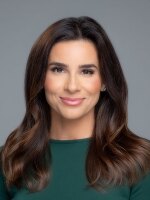Body, Mind, and Spirit.
An indivisible combination that is the cornerstone for holistic wellness for Native Americans. It is also the slogan that appears beneath the medicine wheel on the sign for the San Diego American Indian Health Center.
“Da'anzho,” said Ruben Leyva, standing at the corner in Bankers Hill where the clinic is located. “That means ‘hello’ in the Apache language. I am a Chiricahua Chíhénde Apache. I stand here honored and humbled to speak to you on Kumeyaay land.”
Leyva is a member of the board of directors at this clinic which was founded in 1979. SDAIHC offers a hub of services for patients that are made up of 33% Native Americans. He says the clinic represents so much more than that for the urban indigenous community.
“The urban community is different than the tribal community because many of us here in the urban areas may not be traditional to these lands. And so we rely on places like San Diego American Indian Health Center to establish networks of support within the community,” Leyva said.
In order to understand how COVID-19 has impacted Native Americans, Leyva offers some historical context.
“Dating back to 1519 when Hernan Cortez entered the Americas. He came across Montezuma and the Aztecs, and from that point forward, we've been battling diseases at record proportions," he said.
Leyva says Native Americans born into historical trauma want to acknowledge the harm committed against them, but can use the struggles of the past to turn into positive outcomes, including the fight against the latest pandemic.
“We turn to that historical trauma and use that as a way to let each other know that we're survivors and we will be here beyond this time,” he said.
Vaccinations
Veronica “Ronnie” Whitehorse is a registered nurse and a member of the Navajo Nation in Arizona, which has been hit especially hard by the pandemic. She shares her concerns for members on the reservations because of the lack of supplies or medicine.
“So having this vaccine here and the ability to give it out at this point is really, really huge for us,” Whitehorse said.
But, even with the availability of the vaccine, Whitehorse faces resistance when calling on her patients to come in for their shots.
“We don't have a good historical history with the government and what they've done to Native Americans in general. So that's the basis of a lot of our mistrust,” Whitehorse said.
“It is a challenge because the Native Americans were wronged for so long. I can imagine how people would say, 'now, wait a minute here',” said CEO Kevin LaChapelle.
He says the organization is built around the patient, with Native Americans serving Native Americans, which helps build trust. Among other outreach programs, the clinic uses social media to engage urban members with cultural classes and activities
When it comes to vaccination hesitancy, LaChapelle says, patience is paramount, but social media has helped on that front, too.
“One of the things we did to counter it, which was really amazing, is some of our board members, our elders, they said, ‘you know what, when I get mine, I'm happy to do it on video and give a message and show that I'm doing this because I believe that we have to protect each other',” LaChapelle said. “That helped a lot.”
One of those tribal elders is 86-year-old Randy Edmonds, from the Kiowa and Caddo Nations of Oklahoma. Edmonds received both COVID-19 vaccinations, his visits documented and posted on Facebook to encourage the community to follow suit.
“So they could understand that this elder would like to continue living and wants to take the shot to make sure that happens. And I also recommended that they come to the clinic here to get their shot,” Edmonds said.

Losing history
A survivor of the residential program, and later relocated to California by the Bureau of Indian Affairs. “In history, we have been lied to, we have been disenfranchised, we have our land been taken away from us. We put in concentration camps, which are the reservations. And so by that, we begin to lose traditions. We begin to lose our language. We begin to lose our history,” Edmonds said.
Losing history is something this tight-knit community faces again, this time as a side-effect of the pandemic. Edmonds, a celebrated Kiowa Gourd Dancer, sits beneath a colorful mural created of his image in traditional regalia. A reminder of the pre-pandemic days of singing, dancing, and socializing at powwows.
“That's how we stay together as Indian people. We don't have a community like the African-Americans do, the Hispanics, Asians. They all have their little communities where they live. Indians don't have that. We were scattered all over San Diego,” he said.
While social media has helped to keep the community connected with traditions, the pandemic still impedes the conveying of important generational knowledge. Ruben Leyva says some objects and ceremonies are too private or sacred to be photographed, filmed, or shared online.
“We don't have a tremendous document, written explanation of our customs and culture. Those are delivered — and have been since time immemorial — verbally and in person,” he said. “This is part of the way that we transfer knowledge from the elders to our young adults and our youth.”






